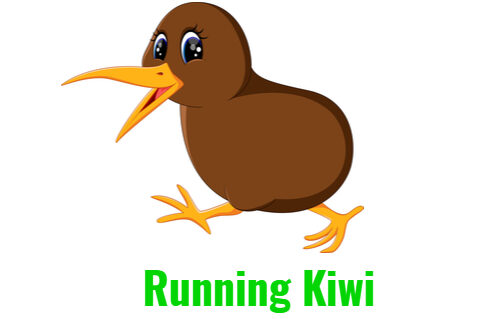Preparing for an ultra marathon is a challenging and demanding task that requires dedication, discipline, and a lot of hard work. Whether you are a seasoned runner or a beginner, it is important to have a solid plan in place to help you achieve your goals and avoid injury.
One of the most important things to keep in mind when preparing for an ultra marathon is to start early. It is recommended to begin training at least six months in advance to allow your body to adapt gradually to the increased mileage and intensity. This will also give you plenty of time to work on your endurance, strength, and flexibility, as well as to fine-tune your nutrition and hydration strategies.
Another key factor in preparing for an ultra marathon is to focus on consistency rather than intensity. It is better to train consistently at a moderate level than to push yourself too hard and risk injury or burnout. This means incorporating rest days into your schedule, listening to your body, and adjusting your training plan as needed. With the right mindset, preparation, and training, anyone can successfully complete an ultra marathon.
Training Plan
Preparing for an ultra marathon requires a well-structured training plan that includes a variety of workouts to build endurance, strength, and speed. Here are some important sub-sections to consider when creating a training plan:
Mileage
Weekly mileage is a crucial component of any ultra marathon training plan. Gradually increasing mileage over several weeks can help prevent injury and build endurance. It is recommended to increase mileage by no more than 10% each week.
Long Runs
Long runs are an essential part of ultra marathon training. They help build endurance and mental toughness. It is recommended to gradually increase the distance of long runs to prepare for the race distance. It is important to listen to your body and not push too hard, as this can lead to injury.
Back-to-Back Long Runs
Back-to-back long runs are a great way to simulate the fatigue that comes with running an ultra marathon. This involves running a long distance one day, followed by another long run the next day. It is recommended to do this once a week in the later stages of training.
Hill Workouts
Hill workouts can help build leg strength and improve endurance. These workouts can be done on hills or on a treadmill with an incline. It is recommended to start with shorter hill repeats and gradually increase the distance and intensity.
Tempo Runs
Tempo runs are a great way to improve speed and pacing. These runs involve running at a steady pace that is slightly faster than race pace. It is recommended to start with shorter tempo runs and gradually increase the distance and intensity.
Trail Running
Trail running is a great way to simulate the terrain and conditions of an ultra marathon. It is important to wear appropriate trail running shoes and gradually increase the distance and intensity of trail runs.
Treadmill
Treadmill workouts can be a great way to train when weather or other factors make outdoor running difficult. It is important to vary the incline and speed to simulate outdoor running conditions.
Nutrition
Proper nutrition is crucial when preparing for an ultra marathon. In addition to training, a balanced diet can help athletes achieve their goals. Here are some tips on how to fuel properly for an ultra marathon.
Fueling
During an ultra marathon, it is essential to maintain energy levels. Runners should consume carbohydrates to fuel their muscles. It is recommended to consume 30-60 grams of carbohydrates per hour of running. Some good sources of carbohydrates include energy gels, sports drinks, and bananas. It is also important to stay hydrated by drinking water or sports drinks throughout the race.
Snacks
In addition to fueling during the race, it is important to eat a balanced diet leading up to the event. Runners should consume a mix of carbohydrates, proteins, and fats to ensure their bodies are properly fueled. Some good snack options include nuts, fruit, and granola bars. It is also important to listen to your body and eat when you feel hungry.
Overall, proper nutrition is essential when preparing for an ultra marathon. Runners should consume a balanced diet leading up to the event and fuel properly during the race to maintain energy levels. By following these tips, athletes can optimize their performance and achieve their goals.
Gear and Equipment
Preparing for an ultra marathon requires careful consideration of the gear and equipment that will be used during the race. The right gear can make all the difference in terms of comfort and performance, so it is important to choose wisely. Here are some key items to consider:
Shoes
Choosing the right shoes is crucial for an ultra marathon. The shoes should be comfortable, supportive, and provide adequate cushioning to absorb impact. It is recommended to try on several pairs of shoes and test them out on long runs to find the perfect fit. Additionally, it is important to consider the terrain of the race and choose shoes with appropriate traction for the conditions.
Backpack
A backpack is necessary for carrying essential items during the race, such as water, food, and extra clothing. It is important to choose a backpack that is comfortable and fits well, as it will be worn for many hours. Look for a backpack with adjustable straps and a waist belt to distribute weight evenly and reduce strain on the back and shoulders.
Watch
A watch is a valuable tool for pacing and tracking progress during an ultra marathon. Look for a watch with GPS, heart rate monitoring, and a long battery life. Some watches even have features specifically designed for ultra runners, such as tracking nutrition and hydration.
Sunglasses
Sunglasses are important for protecting the eyes from the sun’s harmful rays and reducing glare. Look for sunglasses with polarized lenses and a comfortable fit. It is also important to choose sunglasses that will stay in place during the race, even when sweating.
Sunscreen
Sunscreen is essential for protecting the skin from sun damage during an ultra marathon. Look for a sunscreen with a high SPF and water resistance. Apply sunscreen liberally and frequently throughout the race to ensure adequate protection.
Race Day
Pacing
On race day, pacing is critical to finishing a long ultra marathon. Runners should aim to start the race at a conservative pace to avoid burning out early on. It is recommended to run at a pace that feels comfortable and sustainable for the first few miles of the race. As the race progresses, runners can gradually increase their pace if they feel good.
It is important to have a pacing strategy in mind before race day. For example, one strategy is to run the first half of the race at a slower pace and then pick up the pace during the second half. Another strategy is to run at a consistent pace throughout the race. Runners should experiment with different pacing strategies during training to find what works best for them.
Aid Stations
Aid stations are crucial for ultra marathon runners, especially during longer races. Aid stations are typically located every few miles along the course and provide runners with water, electrolyte drinks, gels, and other snacks. It is important for runners to know the location of aid stations and what supplies they will offer.
During the race, runners should take advantage of aid stations to refuel and hydrate. It is recommended to eat and drink small amounts at each aid station to avoid stomach issues. Runners should also carry their own water and nutrition to supplement what is provided at the aid stations.
It is important to note that aid stations can get crowded during races, so runners should plan accordingly and be patient while waiting for supplies.
Course Terrain
When preparing for an ultra marathon, it is important to consider the course terrain. Understanding the terrain can help runners train more effectively and make informed decisions during the race.
Hills
Most ultra marathons have a significant amount of hills, which can be challenging for runners. Hill training is essential for building strength and endurance. Runners should gradually increase the incline and distance of their hill workouts to prepare for the race. It is also important to practice downhill running to prevent injury and improve speed.
Mountains
Some ultra marathons take place in mountainous regions, which require even more preparation. Runners should incorporate elevation training into their workouts, either by running on steep hills or using a treadmill with incline settings. It is also important to practice hiking and power hiking, which can be more efficient than running uphill in some cases.
During the race, runners should pay close attention to the terrain and adjust their pace and strategy accordingly. Uphill sections may require a slower pace and conserving energy, while downhill sections may allow for faster running and recovery.
Recovery
After completing an ultra marathon, recovery is an essential part of the process. This section covers the importance of recovery, injuries, and how to recover from them.
Injuries
Injuries are common during ultra marathons due to the long distances involved. It is essential to identify and treat injuries as soon as possible to avoid further damage. Some common injuries during an ultra marathon include:
- Blisters
- Chafing
- Joint pain
- Muscle strains
- Tendonitis
If an injury occurs, it is crucial to stop running and seek medical attention if necessary. Continuing to run with an injury can lead to further damage and a longer recovery time. Depending on the severity of the injury, it may be necessary to take time off from running to allow for proper healing.
Preventing injuries is also essential. Proper training, stretching, and wearing appropriate gear can help reduce the risk of injury during an ultra marathon.
It is also important to listen to your body during the race. If you feel pain or discomfort, slow down or stop running to avoid further damage.




